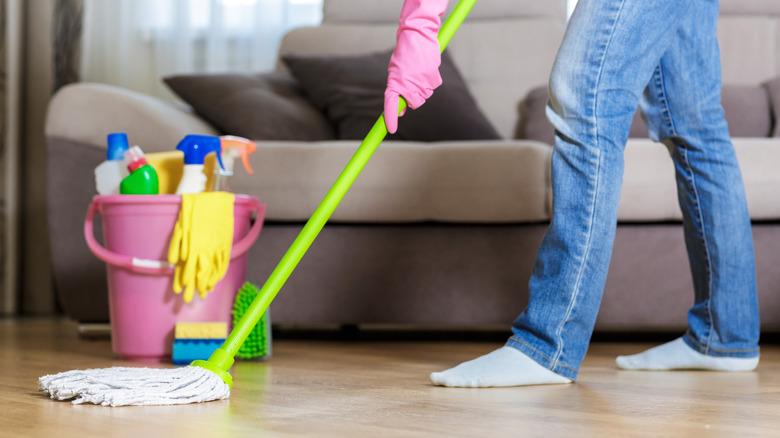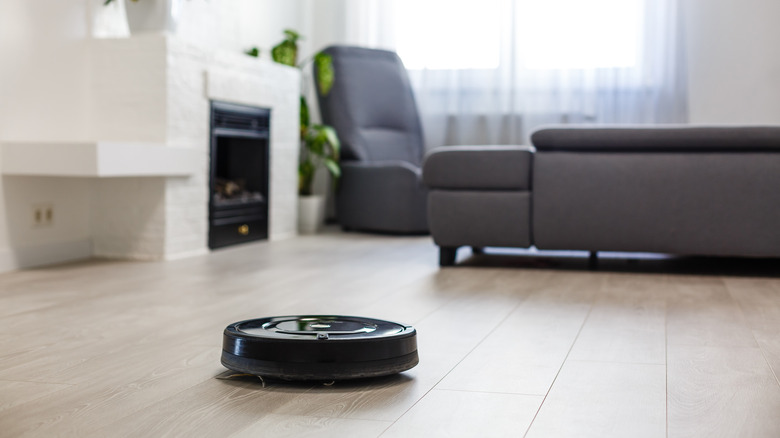The Popular Cleaning Tool You Shouldn't Use On Wood Floors
Wood floors are sensitive to various factors due to their natural composition and structure. They can fade or discolor due to prolonged sun exposure, get scratched easily, or get damaged by harsh chemicals and moisture. Because of how harmful moisture can be, wet mops should be avoided when cleaning wood floors so they don't cause the wood to break down.
While it is common to use a mop and water to clean floors, this popular method doesn't work well with wood because it leaves excessive moisture which can weaken the surface in various ways. Some common issues you might face are warping, buckling, swelling, and staining. Wet mopping can also strip away the protective finish over time, leaving the wood vulnerable to damage and discoloration. Avoid excessive moisture exposure to your wood floors by dry mopping instead. This way, you can remove dust, dirt, and debris without introducing excess moisture.
Alternatives to wet mopping
Instead of using wet mops, consider alternative cleaning methods that are safer for wood floors like dusting or sweeping with a dry mop, damp mopping, and vacuuming. To dry mop, move your mop across the floor like a duster. Shake it outside or dust it off as you go to remove any dirt it has collected so it doesn't spread the dirt around. After you've finished cleaning, clean the mop head and store it in a dry place. To damp mop, slightly dampen it with a wood-specific cleaning solution and use it as normal.
For vacuuming, use a vacuum cleaner with a hardwood floor attachment or a soft brush. These are all ways to effectively remove dirt and debris without the need for moisture. Remember that wood floors always need regular cleaning and maintenance. Follow the manufacturer's care guidelines and use the appropriate products to address any surface damage, and maintain their shine and quality.

